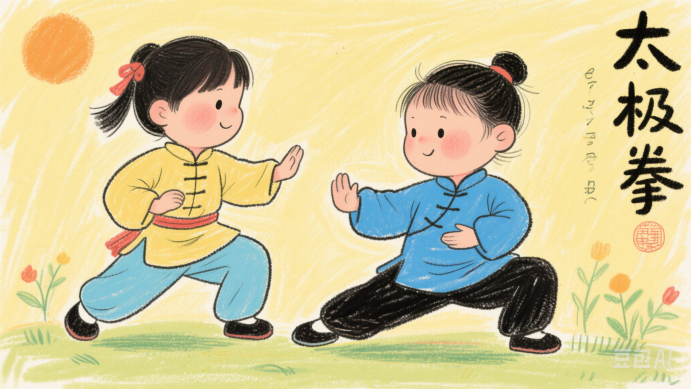
Tai Chi, a traditional Chinese exercise, is good for both the body and mind. This practice started in China over 3,000 years ago and comes from the ideas of yin and yang in the Book of Changes. These ideas teach balance in nature and life.
Tai Chi uses slow, gentle movements. People often call it “meditation (冥想) in motion.” The moves have names like “White Crane Spreads Its Wings.” You breathe deeply while moving, which helps you relax and focus. Tai Chi is safe for everyone. Even people in wheelchairs can do it.
Practicing Tai Chi has many benefits. It makes your body strong and flexible. It improves balance and prevents falls. Studies show it reduces stress and keeps the mind calm. You do not need special equipment while practicing Tai Chi. Comfortable clothes and flat shoes are enough.
There are different styles of Tai Chi, such as Chen Style and Yang Style. Chen-style mixes slow and fast moves. Yang-style is smooth and gentle. All styles focus on harmony between the mind and body.
To start Tai Chi, join a class with a good teacher. Classes begin with warm-ups like shoulder circles. Then you learn simple movements. Practice a little every day. If you cannot join a class, watch some teaching videos at home. Always ask a doctor for advice first if you have health problems.
Tai Chi is popular worldwide today. Parks in China are full of people practicing it in the morning. Tai Chi is not just a form of exercise, but part of Chinese culture. By practicing Tai Chi, we learn balance and peace. It is a gift from China to the world.
原创编写 版权所有 侵权必究! 每日更新 个性化阅读 英语飙升!
2. 2.Why do people call Tai Chi “meditation in motion”?
A Because it has fast moves.
B Because it helps people relax.
C Because it needs equipment.
D Because it’s hard to learn.
4. 4.What do different Tai Chi styles have in common?
A They have the same moves.
B They focus on mind-body harmony.
C They have quick movements.
D They have complex forms.
5. 5.What is the best title for the passage?
A Tai Chi: A Chinese Gift.
B Why People Love Tai Chi.
C Different Tai Chi Styles.
D The History of Tai Chi.


 更多优质学习内容
更多优质学习内容

